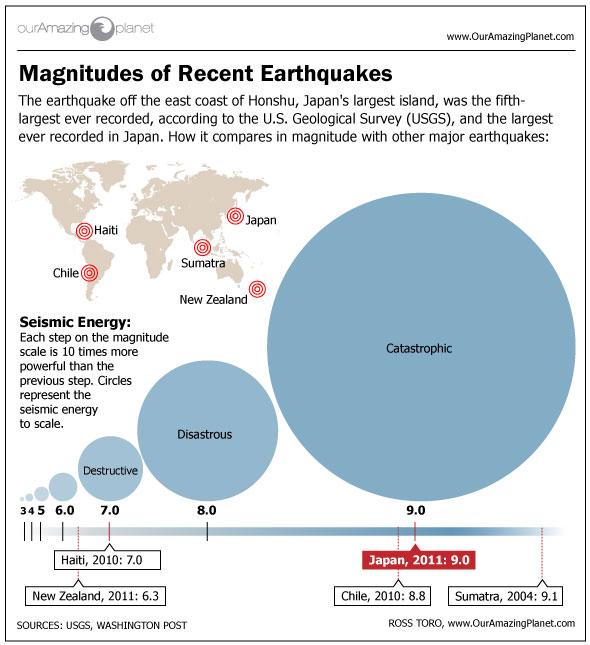
Japan Quake's Size Surprised Scientists

The power of the earthquake that rocked Japan in March took many scientists by surprise. But there were some hints that might have suggested the area was vulnerable to such a rare, devastating quake, researchers find.
The magnitude 9.0 earthquake that struck off the coast of the Tohoku region of Japan on March 11 was unexpected, since there have been few other quakes larger than magnitude 8.0 in the area for the past 1,100 years. Still, a magnitude 8.4 temblor did hit Sanriku in the northeast portion of Tohoku in 1933, and what may have been a magnitude 8.3 earthquake hit southern Tohoku in 869. [Related: Japan's Biggest Earthquakes]
Another clue to the region's earthquake potential was global positioning system (GPS) data that suggested that significant amounts of strain might be accumulating offshore of Tohoku as one of Earth's tectonic plates became stuck while being shoved underneath another. The possibility of major earthquakes there had been debated, said geophysicist Hiroo Kanamori at the California Institute of Technology.
Preliminary analysis of the earthquake based on seismic, tsunami and GPS data suggests there was massive deformation of the ocean bottom along the Japan Trench, where the Pacific Ocean basin's tectonic plate collides with and is pulled under the continental crust of the Okhotsk plate. The quake probably began in the hard-hit Miyagi area, triggering a large disruption in the region near the trench, and then set off smaller disruptions in the Fukushima, Ibaraki and possibly Sanriku areas.
"If this much strain was released, it must have accumulated there," Kanamori told OurAmazingPlanet. "It must have taken 500 to 1,000 years to accumulate that much strain."
Surprisingly, the seismic, tsunami and GPS data revealed that the rupture took place on the upward part of the boundary where the tectonic plates meet. These "up-dip portions" (the part of the subducting plate that is higher up) typically do not accumulate as much energy as was seen in this quake before they burst — they had never been known to produce magnitude 9.0 events.
"Everyone is trying to come up with explanations," Kanamori said. For instance, there may be a spot where the stress between the tectonic plates is especially high — perhaps a mountain on the seafloor that got pulled under the continental crust.
Sign up for the Live Science daily newsletter now
Get the world’s most fascinating discoveries delivered straight to your inbox.
A critical lesson from this quake is that our available record of seismic data is too short to assess the amount of seismic hazard in a given area, Kanamori said. "One should consider all available geophysical data to assess the possibility of a rare event with grave consequence and prepare for it," he added.
In terms of research, "it would be important to further develop ocean bottom GPS capability," Kanamori said. "Without it, it would be difficult to determine the location of large localized strain accumulation which might lead to this kind of event."
As to whether this zone is potentially due for another large quake, Kanamori noted, "There is always potential any place. Because of the nature of the process — a complex fracture process involving many factors — we cannot make any definitive statements on this."
Kanamori detailed these findings on April 14 at the Seismological Society of America meeting in Memphis, Tenn.
This story was provided by Our Amazing Planet, a sister site to LiveScience.










